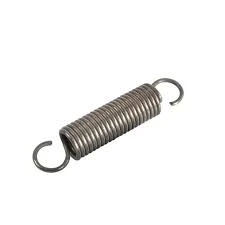
- Mobile Phone
- +8613931874955
- sales@cntcmetal.com
brick horizontal joint reinforcement
Understanding Brick Horizontal Joint Reinforcement
In the construction industry, ensuring the integrity and durability of masonry structures is paramount. One crucial component that contributes to this aspect is horizontal joint reinforcement. Commonly used in brick masonry, horizontal joint reinforcement is essential for enhancing the structural performance and stability of walls. This article explores the significance, types, and installation methods of horizontal joint reinforcement in brick masonry.
What is Horizontal Joint Reinforcement?
Horizontal joint reinforcement consists of steel reinforcement bars or meshes that are embedded within the mortar joints of brick or masonry walls. These reinforcements run horizontally along the length of the wall, usually placed at regular intervals. The primary objective of this reinforcement is to improve lateral stability, provide tensile strength, and control cracking caused by various factors such as temperature changes, moisture movement, and structural loads.
The Importance of Horizontal Joint Reinforcement
One of the most critical roles of horizontal joint reinforcement is to help the wall resist lateral forces. Brick walls, while robust in compression, are relatively weak in tension. Over time, factors like wind loads, seismic activity, and uneven settling can induce stress in a wall, potentially leading to structural failure. By integrating horizontal joint reinforcement, builders can significantly enhance the tensile strength of the masonry, allowing it to withstand lateral loads much more effectively.
Additionally, horizontal joint reinforcement helps to control cracks that can form in brick masonry under various conditions. As temperature fluctuations occur, materials expand and contract; without reinforcement, this movement can result in cracking and other structural issues. The presence of horizontal joint reinforcement helps to distribute these stresses more evenly throughout the wall, minimizing the risk of visible cracks and the associated costs of repair.
Types of Horizontal Joint Reinforcement
There are several types of horizontal joint reinforcement, each designed for specific applications and levels of stress resistance. The most common forms include
1. Steel Reinforcement Bars (Rebars) Typically made from high-strength steel, rebars are often used in masonry as they provide excellent tensile strength and ductility. They are available in various diameters and can be placed in single or multiple rows, depending on the structural requirements.
brick horizontal joint reinforcement

2. Steel Mesh Reinforcement This type consists of a grid of steel wires welded together to form a mesh. It is lightweight, easy to handle, and provides a high level of tensile strength. Steel mesh is often used in residential and commercial applications, offering a balance of flexibility and strength.
3. Fiberglass Reinforcement An alternative to traditional steel reinforcements, fiberglass offers corrosion resistance and lightweight properties. It's particularly beneficial in environments exposed to moisture or chemicals that might cause steel to corrode.
Installation of Horizontal Joint Reinforcement
The proper installation of horizontal joint reinforcement is crucial to its effectiveness. Typically, the reinforcement is placed at specified intervals, commonly every 16 inches or every other course of bricks, depending on the design specifications and local building codes. The installation process generally includes the following steps
1. Preparation of Mortar Joints Before placing the reinforcement, the mortar joints must be cleaned and prepared to ensure a good bond with the adhesive in the mortar.
2. Placement of the Reinforcement The horizontal joint reinforcement is then laid into the mortar joint, ensuring that it lies flat and is positioned correctly between courses of brick.
3. Mortaring Over the Reinforcement After placing the reinforcement, additional mortar is applied on top to encase it fully. This step is vital to maintain the alignment and integrity of the reinforcement within the wall structure.
4. Inspection Finally, a thorough inspection should be conducted to ensure that the reinforcement is properly placed and aligned, meeting all design specifications.
Conclusion
In summary, horizontal joint reinforcement is a critical component that enhances the performance and durability of brick masonry walls. It improves resistance to lateral forces, controls cracking, and contributes to the overall structural stability of the building. As both a preventative measure and an integral part of construction practices, understanding and applying horizontal joint reinforcement is essential for engineers, architects, and builders dedicated to sustainable and resilient construction.
share:
-
Your Source for Concrete Wall Ties and Masonry AccessoriesNewsJul.10,2025
-
Unlocking the Power of Iron Wire for Every ProjectNewsJul.10,2025
-
Explore Advanced Chain Wire and Stainless Steel Mesh FencingNewsJul.10,2025
-
Discover the Benefits of Annealed Wire ProductsNewsJul.10,2025
-
Discover China Stainless Steel Wire Mesh SolutionsNewsJul.10,2025
-
Build with Confidence Using High-Performance Masonry AccessoriesNewsJul.10,2025
-
Why Sacrificial Formwork Is Redefining Underground ConstructionNewsJun.06,2025



















